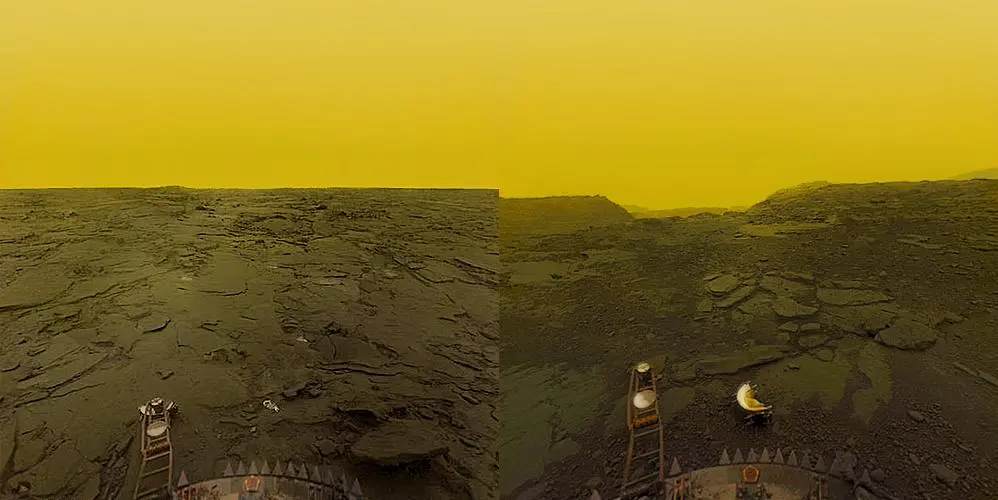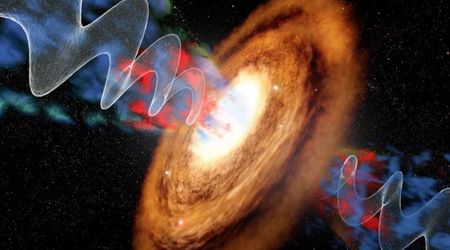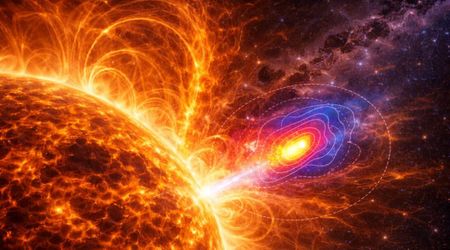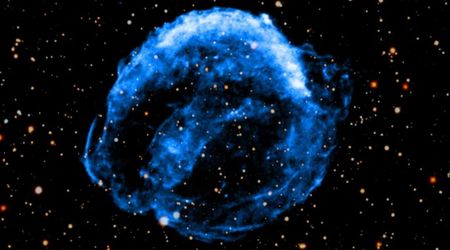Why is Venus hotter than mercury


If you’ve ever sat near a fireplace or a campfire, you may have noticed that you feel hotter the closer you are to the fire. The Sun is a giant ball of fire, so it would make sense that the closer an object is to the Sun, the hotter it would be. So why is Venus (the second planet from the Sun) hotter than Mercury (the closest planet to the Sun)?
How Hot & How Far
The Sun is spherical and has a diameter of ~864,938 miles (~1.392 million km). Nuclear fusion at its core creates huge amounts of energy and the core temperature is ~27 million °Fahrenheit (~15 million °Celsius). The Sun’s energy is detected as visible light in the photosphere and temperatures are ~10,000°F (~5,500 °C) for most of this layer and as cool as ~7,300 °F (~4,000 °C) in sunspots. The chromosphere is the next outer layer of the Sun and temperatures here are ~7,800 °F (~4,320 °C). The corona is the outer most layer of the Sun and its temperature ranges from ~1.7 million °F (~1 million °C) to more than ~17 million °F (~10 million °C),
Mercury has a diameter of 1,516 miles (2,440 kilometers) and its average distance from the Sun is ~36 million miles (~58 million kilometers). During the daytime, it reaches temperatures as high as 800°F (430°C) and at night its temperature can drop as low as -290°F (-180°C).
Venus has a diameter of 7,521 miles (12,104 kilometers) and its average distance from the Sun is ~38 million miles (~61 million kilometers). Its temperature is 900°F (482 °C).
In order to understand why Venus is hotter than Mercury, we need to look into how energy is transferred from one object (The Sun) to the other (Venus). Heat flows from hotter objects to cooler objects and there are three ways that heat energy can be transferred: radiation, conduction, and convention.
1 - Radiation
Radiation is the transfer of heat energy through space by electromagnetic radiation. Feeling heat near a campfire or fireplace is an example of radiation.
The Sun is the heat source for our solar system. The Sun radiates energy in all directions and it emits ~5.6 million Watts/square foot (~63 million Watts/square meter). By the time that energy has traveled ~93 million miles (~150 million kilometers), to Earth, it has diminished to 127.3 Watts/square foot (1,370 Watts/square meter) at the top of the atmosphere directly facing the Sun.
We can use the inverse square law to calculate how much solar energy (compared to Earth) reaches other objects in our solar system. The equation relates the relative distances of two objects as compared to a third and is expressed as 1/d2 (one over the distance squared). For the purposes of this discussion, our three objects will be the Sun, the Earth, and the other planets and d = distance as compared to Earth's distance from the Sun.
To calculate how much solar radiation reaches Mercury, Venus or any other object in the solar system, we first need to express the distance from the object to the Sun in relation to Earth’s distance from the Sun. One astronomical unit (AU) is the average distance from the Sun to the Earth and is equivalent to is 92,955,807.25 miles (149,597,870.66 kilometers). We can see from the below table that the farther an object/planet is from the Sun, the less solar radiation it receives.
Distance From the Sun and Solar Energy Received by Each Planet
| Planet | Distance From Sun (AU) |
1/d2 |
Energy Received (Watts/ft2) |
Energy Received (Watts/m2) |
| Mercury | 0.387 | 6.677 | 849.84 | 9147.42 |
| Venus | 0.723 | 1.913 | 243.69 | 2620.86 |
| Earth | 1 | 1 | 127.28 | 1370 |
| Mars | 1.523 | 0.431 | 54.87 | 590.64 |
| Jupiter | 5.202 | 0.037 | 4.68 | 50.63 |
| Saturn | 9.538 | 0.011 | 1.4 | 15.06 |
| Uranus | 19.181 | 0.003 | 0.35 | 3.72 |
| Neptune | 30.057 | 0.001 | 0.14 | 1.52 |
The heat energy Mercury receives during the day causes its surface to heat up quickly. Venus receives less radiation than Mercury so another process must be responsible for Venus’s higher temperature.
2 - Conduction
Conduction is the transfer of heat energy from one substance to another or within a substance. Leaving a metal spoon in hot food or drink and the handle of the spoon getting hot is an example of conduction. Pavement and buildings heating up the surrounding air at night are another.
Mercury doesn’t have an atmosphere so its heat is conducted back into space at night. That’s why the temperature swings so dramatically from day to night. Venus also undergoes conduction. Its atmosphere means it has a heat transfer process that Mercury doesn’t.
3 - Convection
Convection is the transfer of heat energy in a fluid and a planet’s atmosphere acts like a fluid. Warm air rising and cold water sinking when it’s added to a bathtub of hot water are examples of convection.
Venus’s atmosphere is 96% carbon dioxide, 3.5% nitrogen and less than 1% each of carbon monoxide, argon, sulfur dioxide, and water vapor. The atmosphere is so dense that it would feel like walking through water and the atmospheric pressure on Venus’s surface is over 90 times that of Earth’s.
Carbon dioxide absorbs energy at a variety of wavelengths between 2,000 and 15,000 nanometers, which corresponds to infrared energy. As the carbon dioxide soaks up infrared energy, it vibrates and re-emits the infrared energy back in all directions. Energy easily enters Venus’s atmosphere as visible light but can’t leave as infrared energy. Atmospheric convection means that Venus’s temperature is constant across all latitudes and the planet doesn’t cool down at night.
This atmospheric convection is responsible for the runaway greenhouse effect that envelops the entire planet, keeping it incredibly hot at all times.
Their atmospheric differences plays a key role here
As mentioned before, Mercury and Venus have vastly different atmospheres, which contribute to their different surface temperatures. Mercury is closest to the sun and has no atmosphere to speak of. As a result, it experiences extreme temperature swings, with temperatures reaching up to 800°F during the day and dropping as low as -290°F at night.
In contrast, Venus has a thick atmosphere composed mostly of carbon dioxide with clouds of sulfuric acid. This acts as a heat trap, with the gases absorbing and re-radiating the sun's energy back onto the planet's surface. This creates a planet-wide greenhouse effect, leading to Venus' average surface temperature of 900°F, much higher than Mercury's.
In addition, Venus' atmosphere also helps to distribute heat evenly across the planet, preventing the large temperature swings that occur on Mercury.
A hellish world explored
Venera 13 was a Soviet space probe that was launched on November 30, 1981 as part of the Venera program.
The Venera 13 lander was able to survive on the Venusian surface for approximately 127 minutes (2 hours and 7 minutes). Despite the harsh conditions on the surface, with temperatures reaching over 400 degrees Celsius and an atmosphere thick with sulfuric acid.
The lander was able to transmit data back to Earth, including data on the planet's geological features, information about the Venusian atmosphere and panoramic images of the surface, which you can see below.

Conclusion
Venus receives less solar energy than Mercury, but it’s the hottest planet because of its thick dense atmosphere. Venus’s carbon dioxide-rich atmosphere absorbs and re-emits infrared energy. During the night, this energy remains trapped in Venus’s atmosphere.









